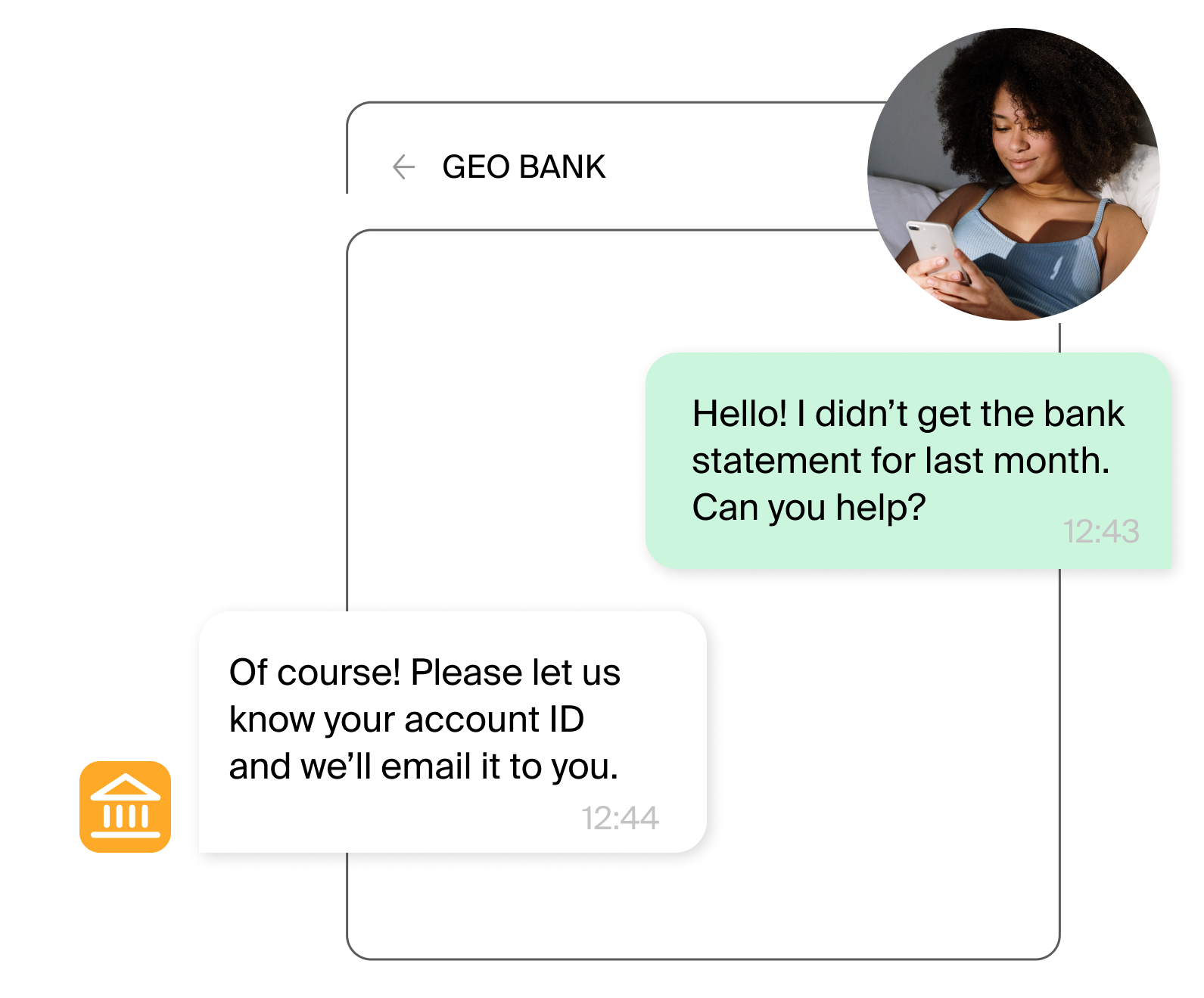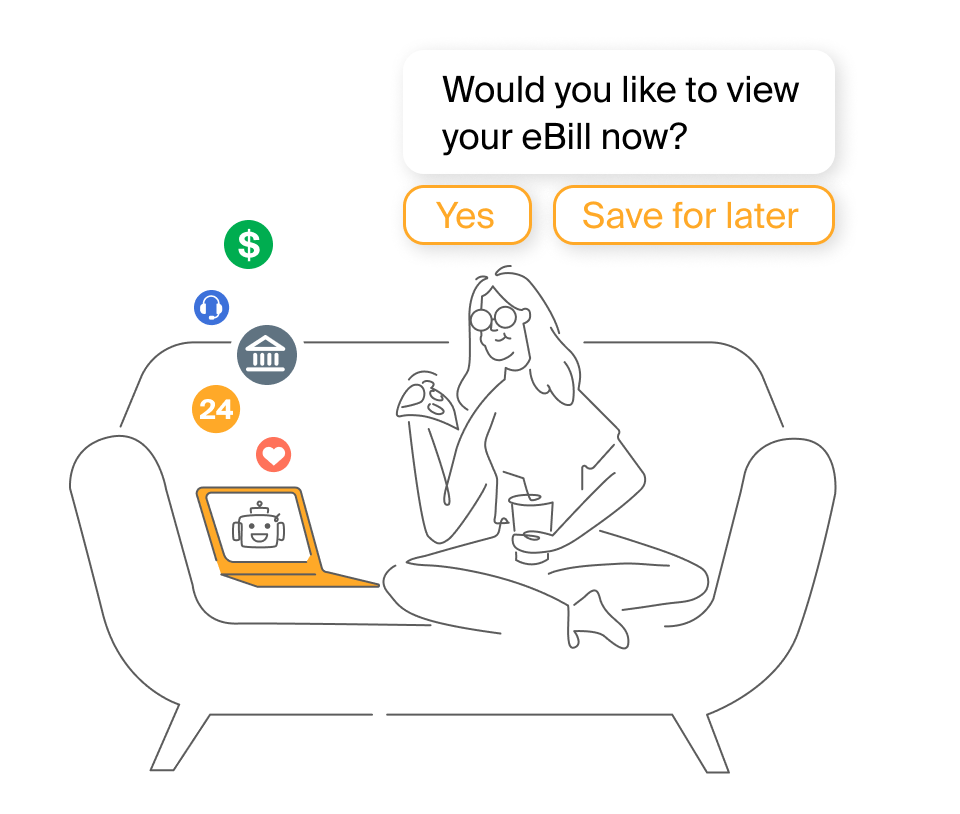From transactional tasks to customer care, banks need to engage their clients across a broad range of touch points. At every step of their journey, consumers expect personalised and timely responses to their queries, which is key to improving their overall experience.
Research reveals that organisations that prioritise customer experiences see increased customer loyalty (53.8%), improved employee experience (47.7%), increased revenue/profits (41.4%) and reduction in costs (33.7%).
Evidently, there’s a lot on the table for banks and many of them recognise the potential of CX. According to an industry study, 34.8% of retail banks have CX value fully defined, but only two out of ten actively work to improve it. Recognising this gap, this article considers how banks, investment houses, insurance companies, wealth management organisations and other financial institutions can elevate their CX by improving customer communications.

#1 Enhance first-touch experiences to build long-lasting relationships.
It typically takes at least several touch points to convert a digital banking prospect, but the first one often matters the most. If you fail to delight them at the very first interaction, chances are they will immediately start looking at your competitors’ offers.
According to Salesforce’s 2022 Future of Financial Services report, 78% of banking customers initiate relationships on a website or app. They might be heading to your contact form or, even more likely, a live chat option to ask for proposals and get answers. If your website navigation is not intuitive and your live chat agents are too busy to respond, you might be losing prospects faster than converting them.

For, the same report reveals that 35% of customers switched their banking provider for an easier, more intuitive experience. As part of enabling seamless banking-as-a-service, you also need to ensure timely, efficient, and relevant customer conversations on your brand-owned channels and beyond, including social media and messaging apps. By implementing AI chatbots on your website and providing easy options to get in touch with your sales representatives, you can shorten the customers’ journey and improve conversion rates.
#2 Provide conversational support to avoid churn and build loyalty.
After delivering a successful first-touch experience, the next priority for any commercial organisation is ensuring retention. By delivering quality services and successfully engaging the customer at every step of the funnel, you can repeatedly create positive experiences and build trust.
A comprehensive 2023 report by Zendesk reveals that 70% of consumers purchase more from companies that offer seamless conversational experiences. By contrast, fewer than 30% of financial institutions offer such experiences through social messaging, in-app messaging, bots, or peer-to-peer communities. Each of these channels is an important venue to reach, engage, and retain a banking customer, and should be a part of your holistic omni-channel strategy.
Viber Business Messaging is one of the key channels to add to this mix, as it can conveniently address a range of customer requests – from transactional updates and real-time account info to targeted interest-based messaging and promotional offers. There are many ways in which banks can partner with Viber to achieve their strategic goals. PrivatBank, for example, achieved a 10% increase in banking service usage through sales meetings booked on Viber, while Ukrsibbank saw twice as many conversions on Viber versus traditional SMS.
#3 Help customers navigate the cost-of-living crisis to ensure retention.

Successful conversational strategies should not only involve multiple communication channels, but also provide meaningful advice and support for customers’ critical needs. In the wake of the cost-of-living crisis, financial institutions play a critical role in helping consumers navigate it.
A survey by Personetics, a customer engagement platform for financial services, reveals that:
- 42% of banking customers demand personalised advice and money-management support
- 63% of respondents haven’t received any advice on how to deal with the inflation crisis in the past three months
- 40% of those who received such advice felt it was too generic
By understanding and addressing their consumers’ financial concerns, banks can go above and beyond in meeting their customers’ expectations. They can grow from service providers to trusted advisors and ensure improved retention by delivering personalised messages and practical advice via consumers’ preferred communication channel. Additionally, they can consider the increasingly extensive use cases for AI chatbots in finance to quickly and efficiently solve consumers’ greatest concerns.
For example, your chatbot can ask your website visitors about their key concerns right at the start of the session. If they request money-management support, the bot can collect other information needed to start a relevant conversation. Your human agents can then take over to offer personalised advice and ask if customers would want to receive regular updates via Viber. In addition, you can ask your customers to subscribe to financial advice via email, SMS or Viber and receive weekly or monthly updates from your blog or internal experts.
#4 Facilitate access to experts for complex issues.
Enabling self-service through banking apps and e-portals has become a common offering by most financial organisations. Customers can easily navigate their daily financial activities without the hassle of going to a brick-and-mortar office. However, the human touch remains essential in resolving complex issues and developing long-term plans.
In addition to enabling your customers to solve simple tasks the easy way (through AI chatbots and FAQs), you also need to facilitate resolution of complex issues. Personalised consultancy via a messaging app can be a great value-added service for customers looking into strategic investments or currently facing financial challenges.
With these issues often being urgent or highly emotional, your agents need to be trained on how to handle them properly. Also, your AI Chatbots need to be able to recognise such requests when they come their way. Note that one of the most common reasons for a poor experience with a chatbot is the frustrating process of getting connected to a human agent. To make their experience complete, you should provide a transfer option at the start of the dialogue and ensure it is available throughout.
#5 Make transactional messages more engaging.

As part of their banking-as-a-service efforts, financial institutions commonly use transactional messages to provide their customers with instant visibility into their accounts. Such messages are mainly sent for deposits and withdrawals, payments, interest reminders and password changes.
However transactional messages can be strategically used to up-sell and cross-sell services as well. By including additional information on promo offers or linking to knowledge base articles where consumers can find more information about the rules of a credit loan, banks can more effectively engage their clients.
Naturally, this shouldn’t be included with every single transactional message. Only where it makes sense to build up a story with an engaging resource, transactional messages can include additional resources. Using Viber Business Messages by GMS, you can enrich your text message content with relevant links, CTAs and multimedia files to attract your consumers’ attention for your extra offerings.
Conclusions
Financial institutions historically have been perceived as dry and detached, but two-way messaging technologies are changing all that. With the right communication solutions, banks can engage their clients more actively and offer services better adjusted to their needs. The five tips outlined above can lift their experiences and provide notable outcomes for the long term.

